Build Journalism Skills and Confidence on the Road
My classroom is in the same hallway as the Spanish and French classes; and we share a common lunch period. After years of listening about how their students learn while traveling, I noticed goals common to our courses, especially in conversing and communicating with others. I wanted to try a trip of my own.
In addition, nearly a decade ago, I traveled to Austria, Hungary and Spain with photography teachers from across the country; I grew so much as a photographer in those weeks.
Since then, I’ve talked to broadcast teachers who take their crews on bus trips and fly as far as Southeast Asia to have them practice in environments students would find uncomfortable, yet familiar. This summer, I was able to do the same with eight of my students.
After nearly two decades of advising journalism publications and taking students to competitions across the country, I considered myself a seasoned traveler and one comfortable with the inevitable challenges that happen when traveling with students. Every trip, I love to watch students grow as travelers, starting to ask questions for themselves, and relying more on themselves than on adult figures – it increases their confidence in themselves and forces them to make decisions on their own. This time, the trip would have an additional component not found in many competition trips.
On this trip, I wanted my students to conduct what journalists call “man-on-the-street interviews” to produce short pieces. They grew so much in their skills and confidence in approaching people, and I grew a lot in my coaching skills. In the classroom, I teach the basics of journalism and give students assignments that ask them to step into their community and tell the stories of the people they find there. However, I never have the luxury of standing directly next to them when they do so. They are in the lunchroom, gym, practice field, bowling alley, and I’m at my desk in good old room E134. It’s too late when they’ve returned to the classroom to help them with their communication skills; it’s always a case of “try this…. next time.”

On the first afternoon in old town Edinburgh, the tour guide gave the girls and I free time; and the girls asked, “Do we have to start now?” I replied,”Yes!”
We walked to the corner in the sprinkling rain and heard bagpipes from the park across the street.
“I’ll do that story,” D. called it.
She couldn’t see the piper because of a tour bus. When the bus pulled away, it revealed a good looking, young, blond man. She nearly lost her nerve. Later she said, it’d be one thing to interview the white-bearded old piper she envisioned, and another a “hot guy who’s 21.” She bravely approached anyway, shot a few photos of him playing, wandered off, waited for a him to take a break while asking me for potential question ideas, and then conducted a quick interview.
As the trip progressed, other students interviewed caricature artists, jewelers, street fair vendors, ice cream vendors and more. There were many opportunities for practicing not only their photography, video, and writing skills, but also their communication and soft skills. Students’ confidence and socialization grew leaps and bounds daily. These are essential skills in today’s world.
All too often these days, I hear journalism teachers, including myself, talk about how lacking students are in one-on-one socialization skills. They are groomed by their cell phones to conduct nearly every social relationship, even dating, by text, IM or tweet. Talking face to face can immobilize them. This lack of soft skills has been noticed by businesses worldwide when discussing the potential employability of the next generation.
Over and over, one can find studies which investigate why this current generation seems to lack soft skills. It’s a global issue if American students and students in other “first-world” countries wish to continue to work with people across the world; they will need these essential skills.
While in the United Kingdom, my students couldn’t rely on the crutches of talking to people they already know or hiding behind screens and buttons. Some were more nervous than others. The broadcast students on the trip have travelled with me before and competed in man-on-the-street feature contests; they jumped right in to their coverage. The less-experienced sophomores were more cautious. They were nervous when I’d leave them, and asked loads of solid questions from me to prepare for interviews.
At one point, when interviewing a street artist, Z. became too nervous, so I continued asking questions to help her finish, and after a couple questions, she interrupted with some of her own – picking up the ball as she saw how easy it was to do. I was able to step back and watch her take control of the storytelling. The confidence and soft skills for my students grew with these unique opportunities to leap outside of their comfort zone, and the coaching skills I gained by working in the field with my students increased, too.
Inspiration for this trip came from several places.
Mike Hernandez, broadcast teacher at Mira Costa High School, often travels with his students to produce documentaries on life in foreign countries, including Vietnam, Cambodia and Cuba. When he and I talked briefly about those trips, he said he planned them himself. His students are very experienced in the story-telling process and found their own stories to report. I wasn’t up for planning the details of international travel on my own, so I chose EF Tours to assist me. Their planning kept us moving. However, I do wish we’d had more time in some locations to produce more in-depth, meaningful pieces. My students’ work is a small tasting when compared to the full-course meal his students produced.
I believe Hernandez was successful in bringing a global education into his classroom and student community because his students learned about issues people faced in the locations where they traveled and learned that people around the world aren’t all that different from themselves. While we were waiting for our tour to regroup in front of Yorkminster, one of my students interviewed an ice cream cart salesman. She said, “He’s just like me. He hates that entry-level job, just like I hate mine, but we love reading.” Bingo!
From my own state, Dave Davis of Springfield, Mo., calls his programs “road-trip journalism,” and has driven along the Oregon coast and around Colorado, among other locations. Davis’ students are much more like my own, both sets are Midwestern suburbanites. His students uploaded daily to a website, which is what I wanted my students to do, but due to terrible wifi and internet at our U.K. hotels, our uploads were done at home in the days and weeks following the trip. It lost the immediacy I was hoping for in their production.
Davis also seems to be successful in teaching global education objectives, even though he travels the U.S. with his students. Davis students explored the social and cultural differences in their stories, as well as problem-solved and increased communication skills when trying to work inside Davis’ tight deadlines to finish multiple packages each day, plus as journalists by posting online, they disseminated their work to the world.
This type of hands-on application to doing journalism was first practiced at the world’s first journalism college, the Missouri School of Journalism at the University of Missouri. Called the Missouri Method, the college believes students cannot learn how to do the best journalism without actually doing it in the field or in an internship, so it plans opportunities world-wide for its journalism majors and the photojournalism majors spend one week in a small town telling the stories of those people via the Missouri Photo Workshop. This kind of immersive experience is mentioned time and time again by MU graduates as a major influence on their career. It was my hope this trip gave my students a similar experience as their collegiate counterparts.
As far as classroom learning goes, I believe there’s only so much student journalists can learn in a classroom. It’s a great place to practice, to create curiosity in concepts, and learn new equipment and technical or software skills, but experience is essential to truly understanding the craft of communication. If all someone ever does is study communication, but not practice their craft, then they’ll never find what works for them or what is truly effective with the public.
During the students’ work, I tried to be nearby, so if they needed assistance, I could either prompt them or model what they needed to grow in the feeling they could do the job effectively. After they were established on a story, I would leave them to work. Students said this made them feel empowered – a goal I had after my readings. At the end of each day, we talked about what went well and how they could improve the next time. Much like the research indicated, experiential learning grew their soft and journalism skills each time they went out to work.
Once I was on tour, I saw their apprehension turn into self-advocacy, and nervousness into a newfound confidence. Daily, I found encouragement in their growth both as journalists and as people – instead of being led to a potential story, they found stories on their own and they grew: from eating the first meal in a mall food court to trying a plate of local Scottish cheeses at a tavern of their choosing – students met the goals I hoped they would. While I was excited by watching my students’ confidence and socialization skills grow daily; I’m even more ready to see what the next batch of students can accomplish now that I’m better prepared by this process and have new lesson plans to try next time.
The lessons I created, after the trip, rely heavily on classroom learning with an emphasis on analysis. In as many places as possible, I try to add in opportunities for students to make their own choices. This is just a start on growing their confidence in the safety of the classroom. Students enjoy making choices; on the trip, they’ll be asked to make choices minute by minute. As their confidence grows from the classroom through to the trip experiences, I hope they recognize their personal growth as well.
I’d like to share the lesson plans I created with you, so that you and your students might find some portion useful in your own travels and quest for increased soft and communication skills. Specifically, as teachers, I believe we need to think more deeply about confidence’s effects on communication and how journalists working abroad expand their skills and their confidence.
Theme: Hands-on applications have proven to be the most effective way to learn and build journalism skills. Typically, student journalists learn by using their peers as sources for photos, stories, videos and media packages; taking it to the next level by practicing their skills outside of school can be both educational and empowering. All too often they can be inhibited by interviewing their peers at school; however, when talking with strangers, they practice their skills and grow exponentially in those skills while telling meaningful stories. Students not only expand their writing, photography and editing skills, but also gain confidence, perspective and a greater understanding of their world.
Subject: Journalism, Photo-Journalism, Broadcast Journalism, Magazine, Online, Social Media
Grade Levels: 9-12
Audience: Students enrolled in and succeeding in a variety of journalism courses. This unit can be adjusted based on student skills and class objectives.
Duration: 2-3 weeks, meetings to prepare to travel, travel time.
Instructional Objectives: These objectives from my school district were written based on Missouri and national journalism standards, and have global standards connections as well.
*I do not own the rights to text, video, or materials used in the lessons. These materials are used under “educational fair use” to educate students, not for a profit. If I inadvertently missed crediting a source, please let me know.
Lesson 1 Plan and Materials:
- Plan
- Begin With the End in Mind PowerPoint PDF
- Dissection Worksheet – right click to download a Word .docx file
- or download a PDF form file: Dissection Worksheet
- 300-word stories
Lesson 2 Plan and Materials:
Lesson 3 Plan and Materials:
- Plan
- Tips for Safety and Effectiveness: Think/Pair/Share
- Tips for Safety and Effectiveness: Collaboration Document
Background information:
- Bibliography
- Possible tour companies:
- https://www.eftours.com – I chose to work with EF because my school district had a long-standing relationship with them. However, their tours are action-packed, which is awesome, but doesn’t leave much time for production, editing and posting.
- https://www.nationalgeographic.com/student-expeditions/ – I haven’t heard of anyone taking this trip, but if you have, I’d love to hear how it went. How awesome would it be to travel with a National Geographic journalist?
- Note: I teach all forms of media, so these lessons include plans for three journalism skills (writing, photography and broadcast) I wanted students to focus on in their work on the trip, so some areas will be specific to one of those three skills, where other spots will crossover to all three.
I hope that by using my lessons, which include some of the readings, plus supplemental materials, with my next set of travelers, I will be able to better prepare them for what they will face and make them even more successful in both their media productions and their personal growth. I believe future student travelers will be better prepared and feel more confident from the beginning based on what I’ve learned on this first trip. I’ve learned to be a better coach, to give more examples so students know the end goal in their work, and to give students stiffer deadlines on the trip, so they’ll produce while their work is still fresh in their mind.
I wish the same for you and would love to hear about your travels!




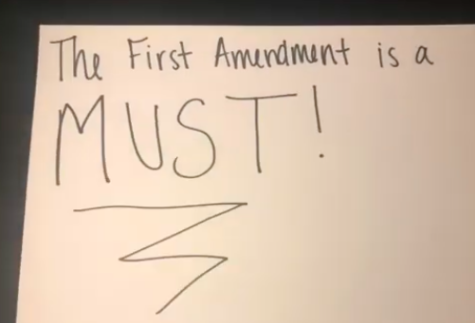
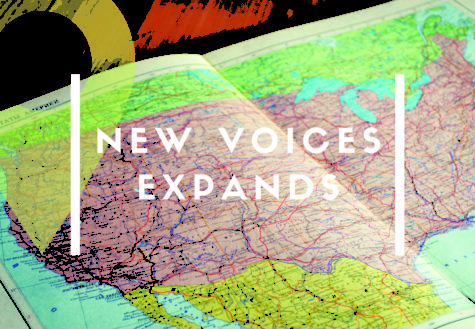
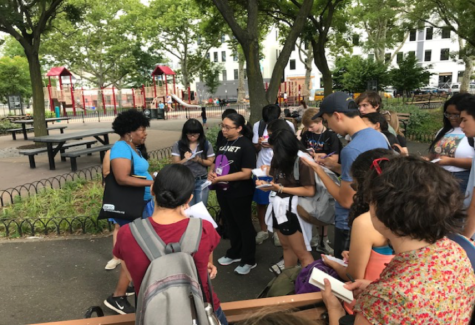

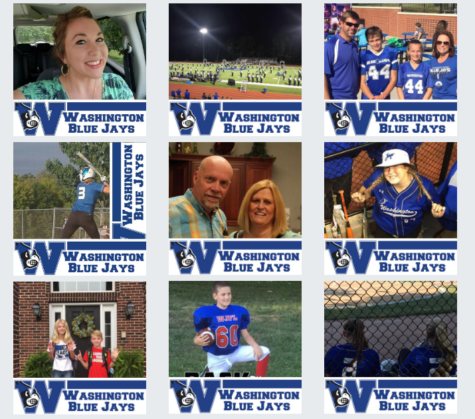
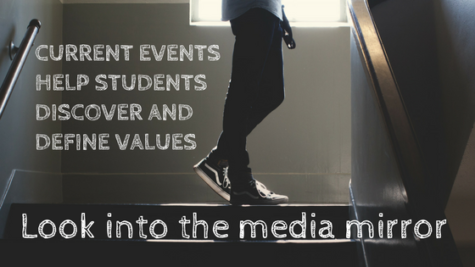

Jaiden Medard • Sep 4, 2020 at 2:38 pm
All too often they can be inhibited by interviewing their peers at school; however, when talking with strangers, they practice their skills and grow exponentially in those skills while telling meaningful stories. Students not only expand their writing, photography and editing skills, but also gain confidence, perspective and a greater I believe there’s only so much student journalists can learn in a classroom. It’s a great place to practice, to create curiosity in concepts, and learn new equipment and technical or software skills, but experience is essential to truly understanding the craft of communication. understanding of their world.